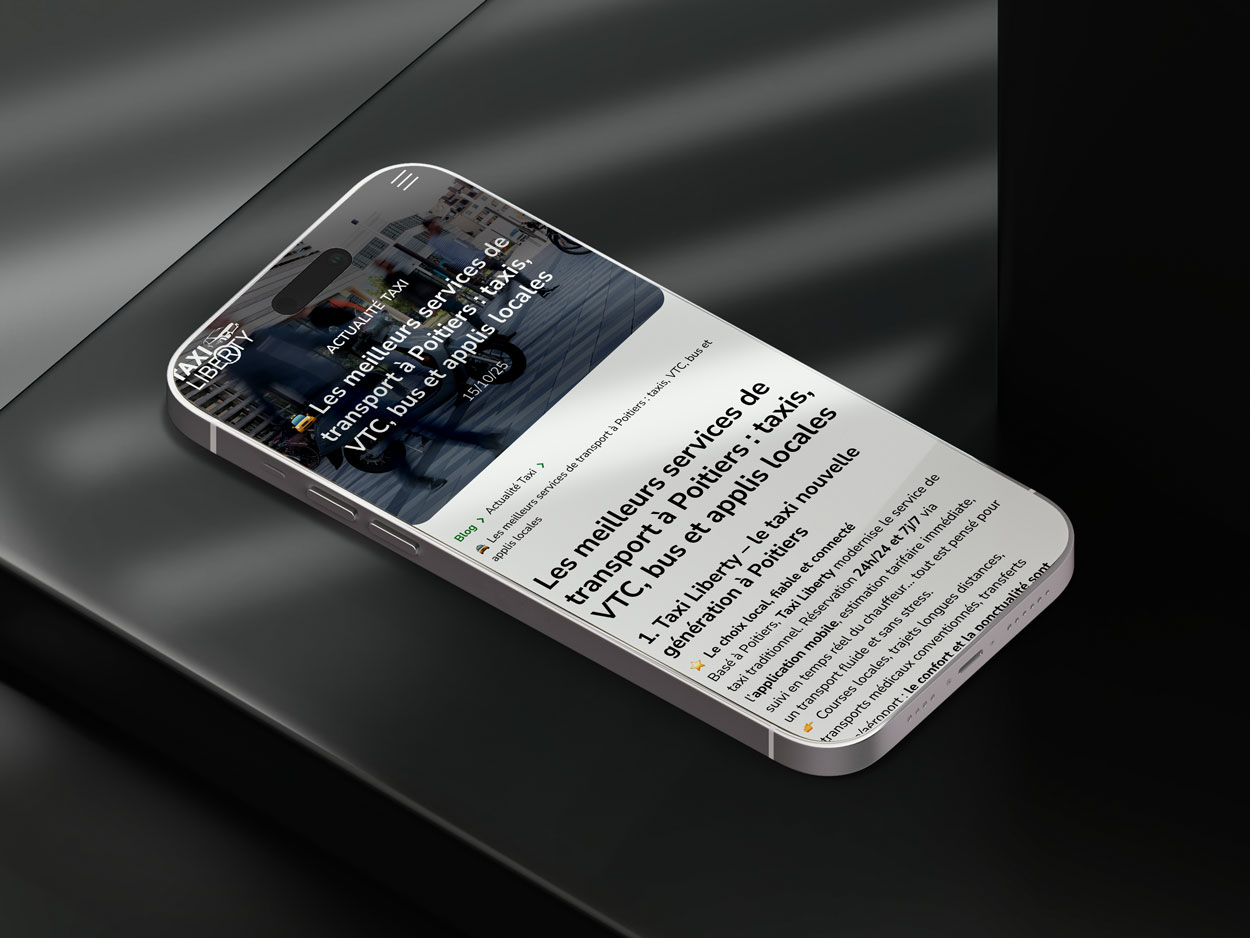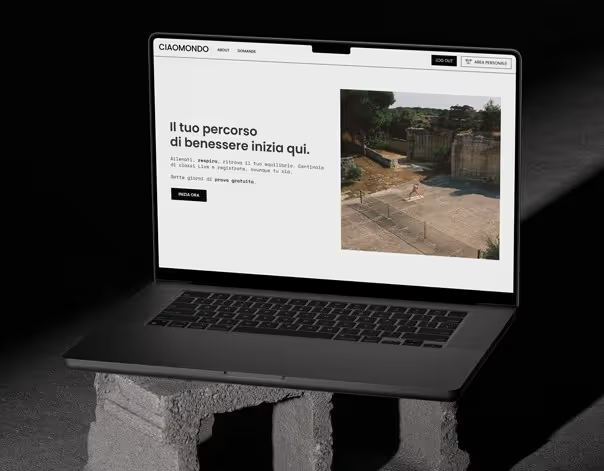
Taxi Poitiers, a Webflow blog designed for local SEO

When Taxi Liberty contacted me, their showcase site was doing the job: presenting the services, reassuring, converting. But to win the battle for organic traffic, the one that brings qualified requests without buying every click, a solid editorial brick was missing. My goal: design the mock ups and develop, directly in Webflow, a blog that integrates perfectly with the existing design, while raising the technical level of the site.
Background & challenge
Creating a blog is not just “adding an article list page.” It is to build a real content ecosystem that serves the brand, users, and Google... in that order. It was therefore necessary to:
- extend the visual identity of the site without altering it,
- structure the information so that each article has a place, a role, and entry points,
- prepare the technical ground (markup, structured data, performance) so that the content is found, understood and well positioned.
My approach
I always start with reality: what should a page that makes you want to be read look like on mobile, how to facilitate publishing on the team side, and how to build a internal networking that propels the key pages of the site.
I first used the existing brand identity: fonts, colors, colors, rhythms and article maps align visually with the site, for a “as original” rendering, without friction. Then, I set up the editorial architecture: a clear and breathable blog page, category pages with an optimisable editorial intro, and an article template focused on readability.

Design & experience
You can feel a good blog before you read it. I took care of the visual rhythms (breaths, hierarchy H1/H2/H3), to overview cards that already tell a story (useful title, short excerpt, orientation meta), and to a article layout which invites you to scroll: main image with caption when useful, highlighted quotes, simple and visible call-to-action. The result: a continuous experience, where you forget the tool and focus on content.
Technical SEO
On the technical side, I did what really matters: a clean semantic structure, structured data (Article, Breadcrumb), dynamic metadata (titles, descriptions, Open Graph), and a Sitemap that exposes the new pages correctly. Images are optimized and loaded intelligently, non-critical scripts are deferred, and Rich Text is kept lightweight. These are details that are invisible to the user... but decisive for performance and indexing.
Webflow CMS & autonomy
The team now publishes independently. The dynamic templates ensure total consistency, even when several editorial hands are involved.

Impact
This device opens new organic front doors : each article or category becomes a potential landing page for a local request (events in Poitiers, practical taxi information, sector innovations). The mesh subtly pushes towards the business pages, the mobile readability increases time spent and reduces bounce, and editorial discipline (useful titles, clear intros, complete SEO fields) transforms the writing effort into concrete results.

What I delivered
- Figma mock ups (Blog, Category, Article) faithful to the existing brand identity of the site, ready to be deployed.
- Blog page
- Blog Categories page
- Article page
- Full integration into Webflow CMS, with robust templates and a clear nomenclature.
- Settings Technical SEO & performance, plus an editing guide to stay on track over time.
Stack
Webflow (CMS & templates), approach Client-First for the structure, “Seo-by-Design” at each stage.










